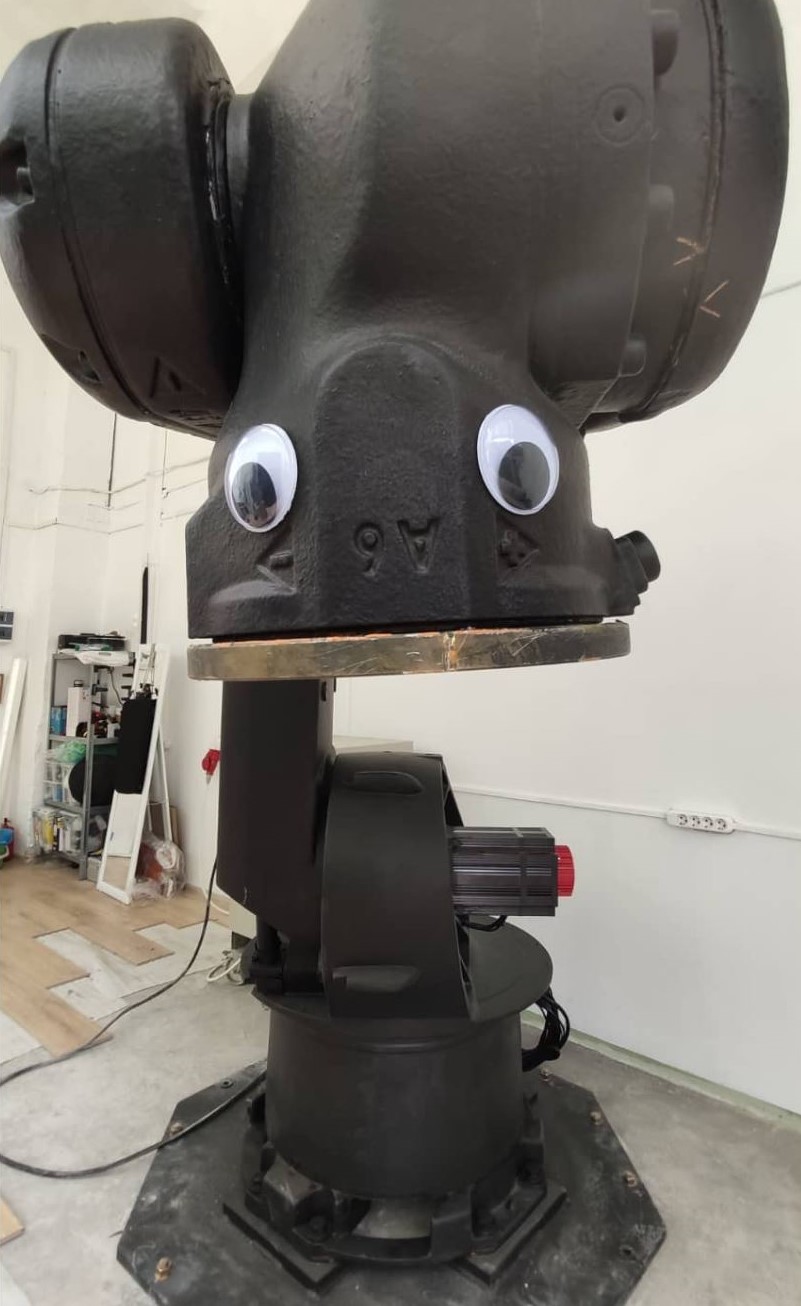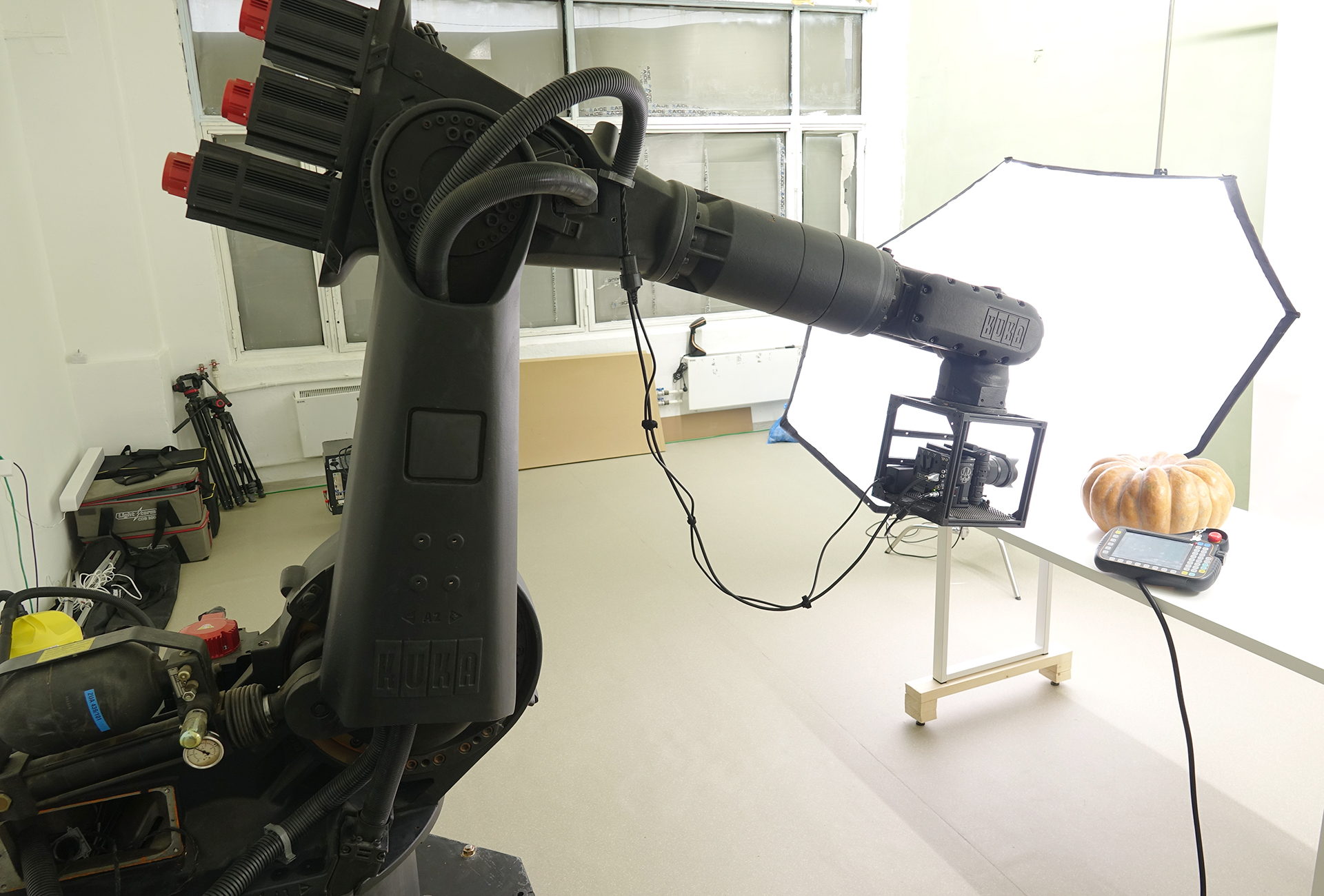
Spoil the intrigue of the headline right away? We are talking about an industrial robot arm "for not very expensive", many times cheaper than a new analogue. Why black? Everything is simple, our use of the manipulator is one of the sea of possible and rather rare: the robot drags the camera and you need to remove the reflections of light from the hand as much as possible.
Why make video filming so difficult? The answer is simple: the robot provides the speed, accuracy and repeatability of the camera's trajectory, not to mention the complex trajectories for which the living operator would have to become a hybrid of a butterfly and a hose from a vacuum cleaner. The well-defined camera path is also good because the footage can be used without much difficulty in 3D scenes on a computer. That is, the border between the real and the virtual camera is erased when creating video with elements of computer graphics.
Ready-made filming solutions of robotics scared the price (about $ 150,000 and further into space without stopping), so the path of hicks was chosen, when the price is paid less in banknotes and more in time, then, obscenities and gray hair.
Monthly thematic views of YouTube and comparisons of specifications on official sites, long and often empty correspondence with sellers of Chinese and not very hands eventually resulted in the purchase of a robot. It was a retired veteran of the European automotive industry from the 2000s, a former KUKA KR125 / 2 6-axis welding manipulator with new Chinese motors and controllers installed with a payload of 90 kg.
What's in the box? That is, under the stretch film? There we have the robot itself, a wardrobe made of a piece of an armored train with boards and cables, plus a wired control panel with a touchscreen (teach pendant). The total mass of all this happiness is about 1.3 tons, including an additional octagonal steel base that unloads the concrete floor of our ... 4th floor



After a noisy and dusty installation, a camera box from a machine profile was added to the robot. The box acts as an attachment

The first turn-ons and test shots revealed a strong vibration level. Studying the manuals and adjusting the parameters in the engine drivers helped remove these vibrations, but one noticeable problem remained.
The fact is that the program in teach pendant is written line by line, a text file with a G-code (there is also a language in the controller, but there was nothing special in it that was not in the G-code). The problem turned out to be that the hand was executing the program line by line. That is, read the line - moved - stopped. I read the second and moved on. After the execution of each line, the program stops. The settings can only indicate acceleration and deceleration, but there is no way to remove the very fact of this stop. The motor and controller manufacturer has confirmed that this is the case. As a result, all dreams of smooth, complex multi-axis camera movement disappeared into oblivion.

In the future, the jambs of the controller's mathematics appeared in the form of incorrect interpolation when moving the hand. The hand is 6 axes, 6 motors, the controller does not interpolate the final trajectory of the tool movement (in our case, the camera), but smooths the movement of each motor. In practice, a straight line remains straight only at very high accelerations, without smooth accelerations and smooth stops.

Attempts to communicate with the hand through a computer were not particularly successful. For communication, the Modbus RTU protocol is used, but this is not a full-fledged control, but just an imitation of pressing buttons on the teach pendant. This made it possible to connect a regular gamepad through a computer instead of a heavy teach pendant, but also with a bunch of restrictions, such as the inability to press 2 keys simultaneously to move diagonally.

All these adventures led to the idea that the controller for the robot must be made of its own. And again studying manuals, communicating with the manufacturer of drivers for engines. The drivers have support for the Ethernet powerlink protocol, which is not bad in itself. Attempts to compile Powerlink from source are still in progress, since there is little documentation.
Summing up the intermediate result, we can say that even the current version of the hand work looks quite workable for a variety of filming.
But you want much more, you just need to configure Powerlink and write your own software. In practice, a minimal controller will be just a program that can turn the axes at the required speed in the desired direction according to a prepared table. Here the selfish help of a bright mind from the audience would be quite useful, after which the story can be safely continued.
